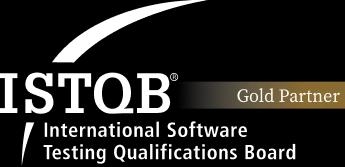
LMS and LXP: Which Platform is Right for Your Business?
Today, as online learning and training platforms become increasingly popular, choosing the right tool to optimize employee training is essential. Among these, LMS (Learning Management System) and LXP (Learning Experience Platform) are two platforms that attract significant interest from businesses. This article will help you understand the features and benefits of each platform, enabling you to make the most suitable decision.
I. Overview of LMS and LXP
Enhancing the quality of employee training is a top priority for businesses today. To manage and optimize the learning process, many organizations have adopted modern platforms like LMS and LXP. These are two distinct systems: one focuses on learning management, while the other emphasizes user experience. Understanding each platform will help businesses choose the right solution to meet their training needs effectively. Let’s explore these two concepts in more detail.

1. What is LMS?
LMS, or Learning Management System, is a popular system that helps organizations manage training processes, monitor progress, and report employee learning outcomes. This system allows administrators to control the entire learning process, from designing content to managing learners and evaluating performance. Some widely used LMS platforms include Teamhub LMS, TalentLMS, and others.
2. What is LXP?
In contrast to LMS, LXP (Learning Experience Platform) is a platform focused on the user’s learning experience, enabling personalized learning processes and offering more freedom in how users learn. Users can search for and select materials and courses based on their interests or personal needs.
II. Comparison of LMS and LXP: Pros and Cons
LMS and LXP are two popular digital learning platforms, each offering unique advantages for supporting the development of digital training. Below are the strengths and limitations of each platform, making it easier for managers to choose the best solution for their organization's training objectives.
| Strengths | Weaknesses | |
| LMS |
|
|
| LXP |
|
|
Both platforms bring distinct value, but the choice depends on your business's training objectives and needs. Selecting the right platform can help optimize your learning and development strategy.
III. Key Differences Between LMS and LXP
To choose the right training platform, understanding the differences between LMS and LXP is essential. These two systems differ not only in functionality but also in their approach and personalization capabilities, each offering unique value in enhancing learning and training effectiveness. Let’s dive into a detailed analysis to uncover the key distinctions between these platforms.
1. Management vs. Learning Experience

LMS (Learning Management System) primarily focuses on managing the user’s learning process through features like document management, progress tracking, and performance evaluation. This system helps managers control the entire training operation in a structured and easily monitored way. Conversely, LXP (Learning Experience Platform) emphasizes the learner's experience, allowing them to freely explore and choose from a diverse range of learning content, such as videos, podcasts, and in-depth articles. This flexibility enables learners to access and adjust their learning paths as they see fit.
2. Approach

LMS generally uses a top-down approach, meaning that learning content is decided and implemented by the organization. Learners follow a set program to meet the training goals set by the company. On the other hand, LXP employs a bottom-up approach, encouraging learners to explore and select content that aligns with their individual needs. This approach not only fosters flexibility but also promotes knowledge-sharing and interaction among learners, creating a more dynamic and open learning environment.
3. Personalization

The personalization capability of LMS is often limited, as this platform typically implements fixed learning programs with little flexibility for individual needs. Learners follow a pre-set sequence and have minimal ability to adjust content according to their preferences. In contrast, LXP allows for a high level of personalization, helping users build customized learning paths based on their interests, skills, and goals. This personalization boosts learning motivation, making learners feel more engaged and proactive in acquiring knowledge tailored to their needs.
IV. When to Choose LMS, LXP, or a Combination of Both
Choosing between an LMS (Learning Management System) and an LXP (Learning Experience Platform) isn’t always straightforward, as each platform has unique advantages suited to different business needs. Below is a detailed guide to help you make the right choice based on your training and employee development goals.
1. When to Choose an LMS
An LMS is ideal for businesses that need to adhere to strict regulations and require a tightly controlled training process. LMSs enable precise measurement and assessment of employees’ learning outcomes, making them well-suited for industries with rigorous training and certification requirements, such as healthcare, finance, and manufacturing.
2. When to Choose an LXP
An LXP is suitable for organizations looking to encourage self-directed learning and provide opportunities for employees to develop skills based on personal interests. For companies in creative fields or those that wish to promote a learning culture, LXPs enhance employees’ initiative and engagement in their own learning.
3. When to Combine LMS and LXP
For larger companies, combining both an LMS and an LXP can be an optimal solution. An LMS can be used to manage required and compliance-oriented courses, while an LXP offers an expanded learning experience, supporting personal development needs and fostering a spirit of mutual learning.
The choice between LMS, LXP, or a combined approach depends on the needs and training goals of your business. If you need a solution focused on management and control, an LMS is a suitable choice. If you want to promote creativity and a free-learning culture, an LXP will provide greater value. For a comprehensive learning environment, combining LMS and LXP will yield the best results.
V. Conclusion
Choosing between an LMS and an LXP depends on each business’s goals for training and employee development. If your company seeks a solution to systematically manage internal training, an LMS is the ideal choice. However, if you aim to encourage self-learning and creativity, an LXP will bring more value.
In some cases, combining both an LMS and LXP can create a comprehensive learning environment, optimizing employee development while boosting business performance. Clearly identify your company's needs and goals to make the best choice! Thank you for reading, and don’t forget to follow us for more valuable insights!
SHARE THIS ARTICLE
Author
Huyen TrangSEO & Marketing at Tokyo Tech Lab
Hello! I'm Huyen Trang, a marketing expert in the IT field with over 5 years of experience. Through my professional knowledge and hands-on experience, I always strive to provide our readers with valuable information about the IT industry.
More Posts



About Tokyo Tech Lab
Services and Solutions
Contact us
© 2023 Tokyo Tech Lab. All Rights Reserved.







